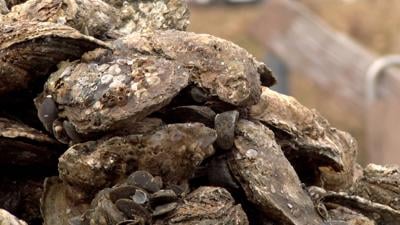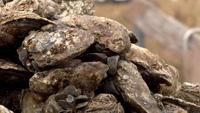TODDVILLE, MD - In a move to keep seafood enthusiasts well-informed, Maryland's Eastern Shore has seen the issuance of new state advisories today regarding certain fish caught from waterways across the state.
The Maryland Department of the Environment's advisories are part of an ongoing effort to educate the public about potential risks associated with consuming seafood from the region. Within the picturesque Chesapeake Bay waterways, where a variety of seafood is sourced, the daily consumption of chemicals by fish, oysters, and crabs has been recommended by MDE.
Of particular concern are per- and polyfluoroalkyl substances (PFAs), commonly known as forever chemicals. PFAs are known for their persistence in the environment and have been linked to health issues, including cancer. The Maryland Department of the Environment has undertaken a comprehensive study this year, the results of which offer reassuring news to seafood lovers in the area. The study indicates that local catches are safe for consumption, alleviating worries about potential health risks associated with seafood from Chesapeake Bay.
According to the Maryland Department of the Environment, certain areas showed trace amounts of PFAs in some of the fish, but the levels are not cause for immediate concern. Consumption would have to be significantly elevated for any potential health issues to arise, emphasizing that the majority of seafood from Maryland's Eastern Shore is safe to eat.
MDE reported, "If a person were to eat more than the recommended meals every month for 30 years, then they have an increased risk of 1 in 10,000 of having a health outcome due to that level of consumption."
President of the Delmarva Fisheries Association, Rob Newberry expressed confidence in the safety of locally sourced seafood, stating, "There's nothing wrong with our seafood. The seafood that we, the watermen, produce in the state of Maryland, is a good and clean product." While acknowledging isolated incidents of stomach problems related to oysters, the representative clarified that these cases did not originate from the wild fishery.
Oysterman Tim Robinson welcomed the findings, noting the positive impact on sales. "We always want our seafood safe, and if consumers hear about advisories, it cuts down on our sales because no one wants to eat contaminated seafood. Any lost sales go elsewhere," Robinson emphasized.
In conclusion, the recent advisories from the Maryland Department of the Environment serve not only to inform the public but also to reassure seafood lovers that, based on the latest study, the seafood from Maryland's Eastern Shore remains a safe and delicious choice. The information aims to maintain public trust and support for the local seafood industry, ensuring that consumers continue to enjoy this popular protein without undue concern.
For MDE's statement click here.
For Consumption advisory charts click here. (Easiest to follow when you look at the Fish Consumption Advisory Charts By County.)


